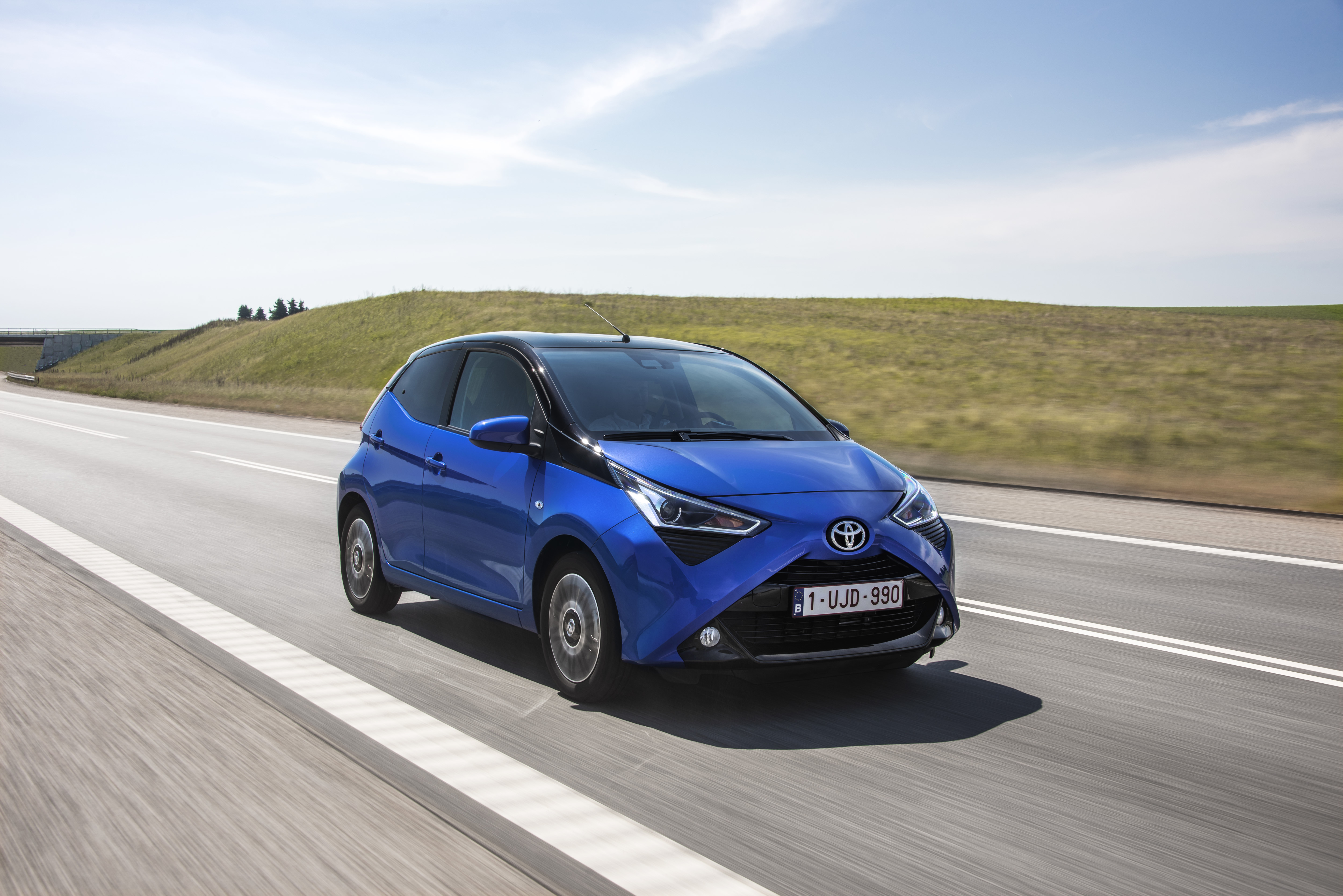What is it?
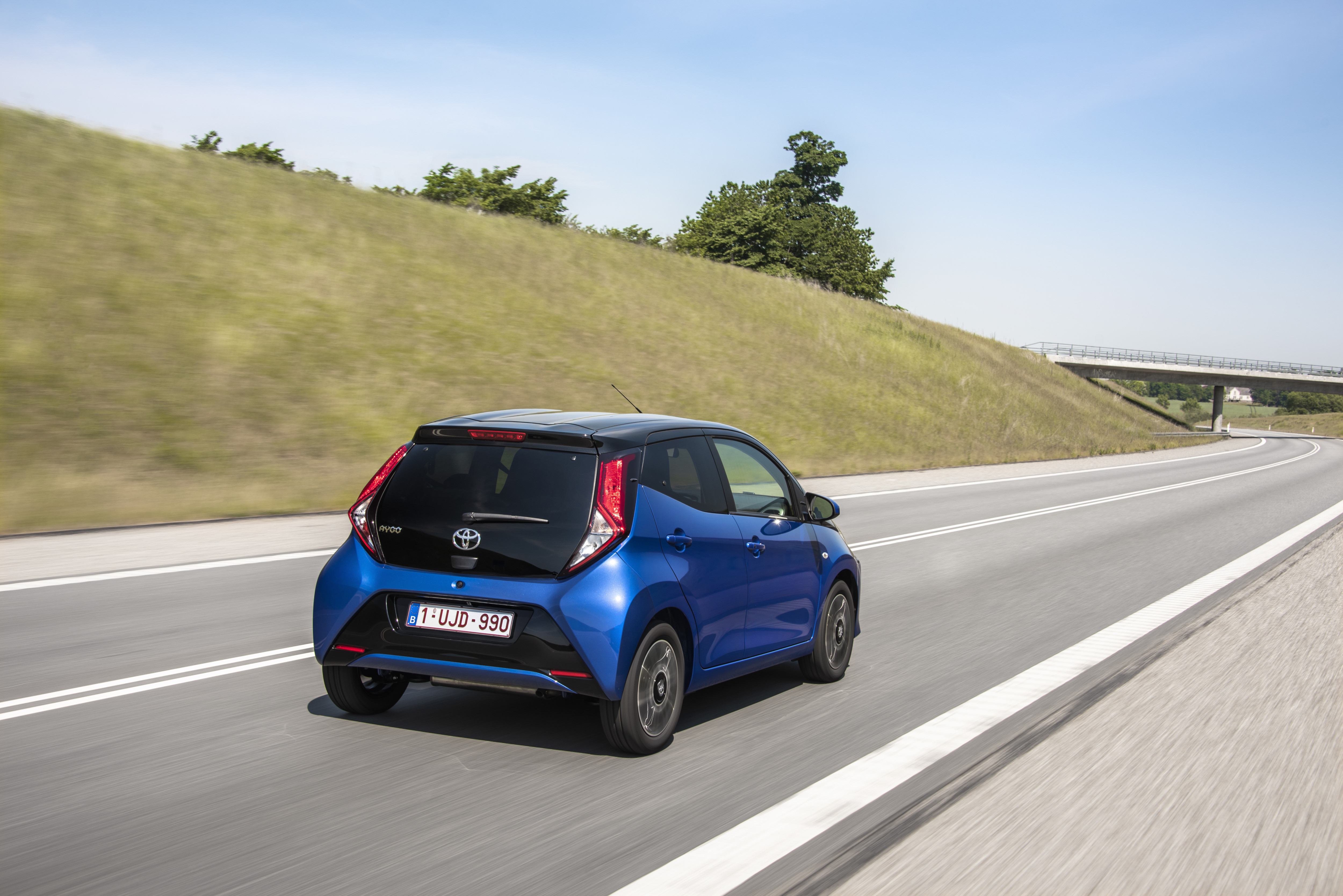
The first-generation Toyota Aygo – launched in 2007 – was a brilliant city car, virtually without rivals until the likes of the Volkswagen Up! showed the world that they could be as mature as superminis. The second-generation version, brought out in 2014 and once again built alongside identical models from Peugeot and Citroen, moved the game on slightly with a bold new look.
It’s now received its first major upgrade since launch, giving it a new set of gloves in the fight against its rivals such as the Up!, Vauxhall Viva and Suzuki Celerio.
What’s new?
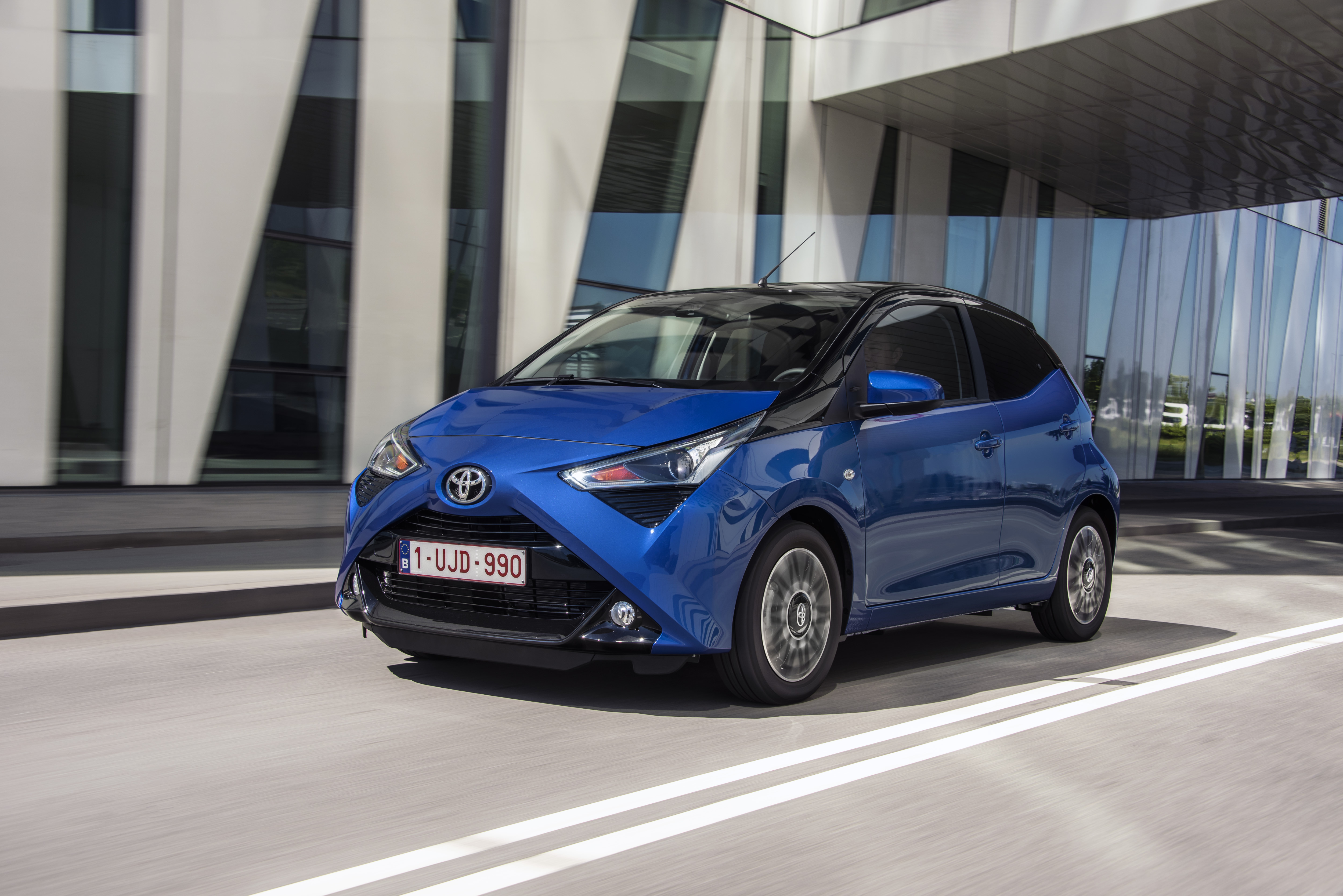
The old ‘X’ styling motif has been toned down, with the interchangeable coloured panel now replaced with a simpler ‘face’, similar to the rest of the Toyota range. It’s flanked by new headlights with LED daytime running lights – mirrored by LED features in the tail lights – and bolstered with two eye-catching exterior colours: Blue Burst and Magenta Fizz.
Inside, there are few obvious changes, though the old infotainment system has been replaced with a more modern Pioneer head unit incorporating Android Auto.
Under the skin there has been a raft of alterations, with minor improvements to the engine and serious work on reducing noise, vibration and harshness.
What’s under the bonnet?
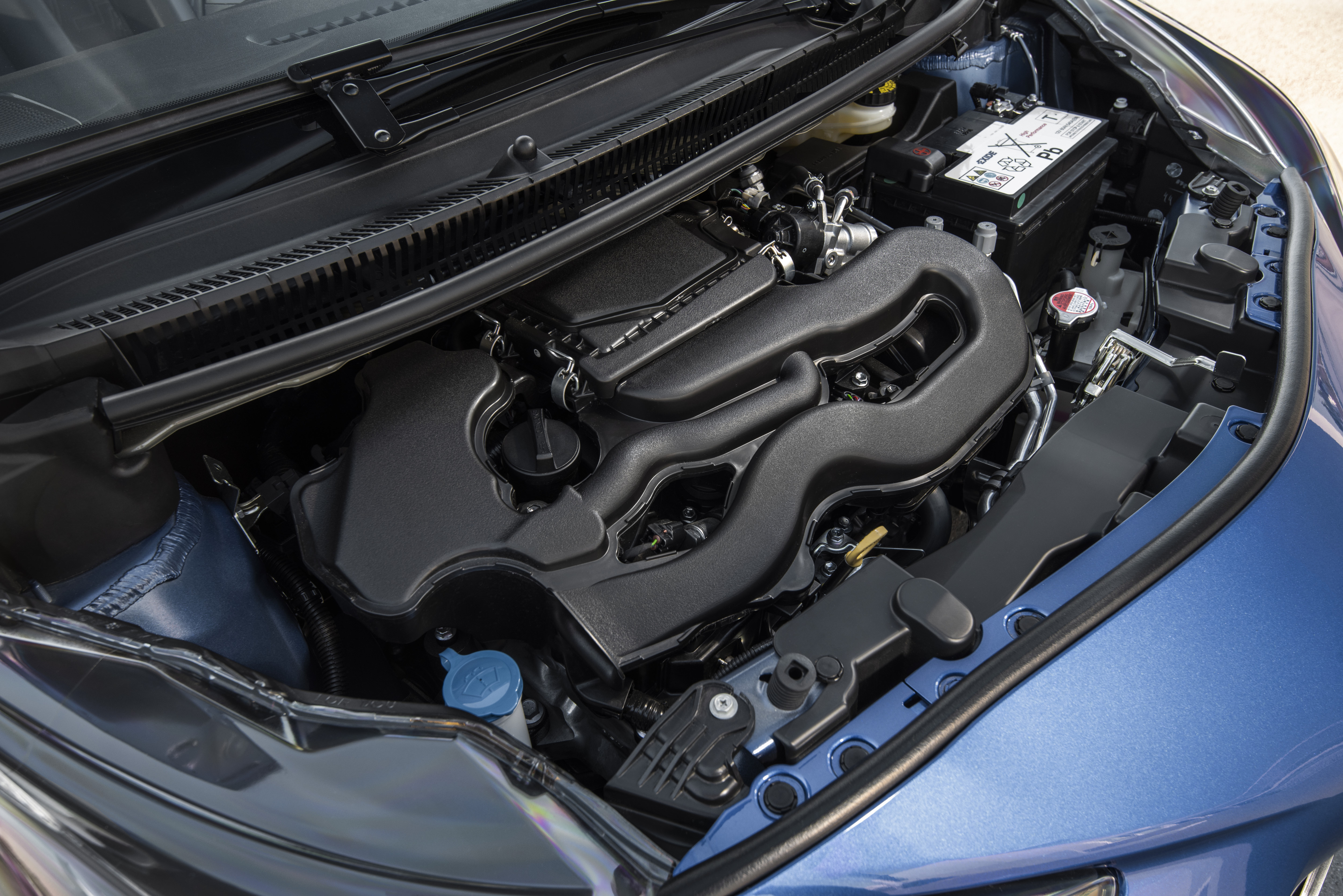
Though the Aygo’s siblings from Peugeot and Citroen are offered with an additional, higher-powered engine, the Toyota gets just one. It’s a 1.0-litre three-cylinder naturally aspirated unit, pumping out 71bhp and 93Nm of torque. The latter figure has actually decreased from the last model, but Toyota says it’s now spread over a wider area, improving driveability.
The engine offers up a characterful thrummy sound and pairs well with a progressive clutch and decent five-speed gearbox, but it’s very slow indeed. Despite performance figures that are broadly in line with other city cars, it feels far less peppy than its Skoda Citigo rival, and joining motorways or faster roads is a full-throttle effort.
It is, however, very efficient. Toyota claims 68.9mpg on the combined cycle – helped by the car’s light weight.
What’s it like to drive?
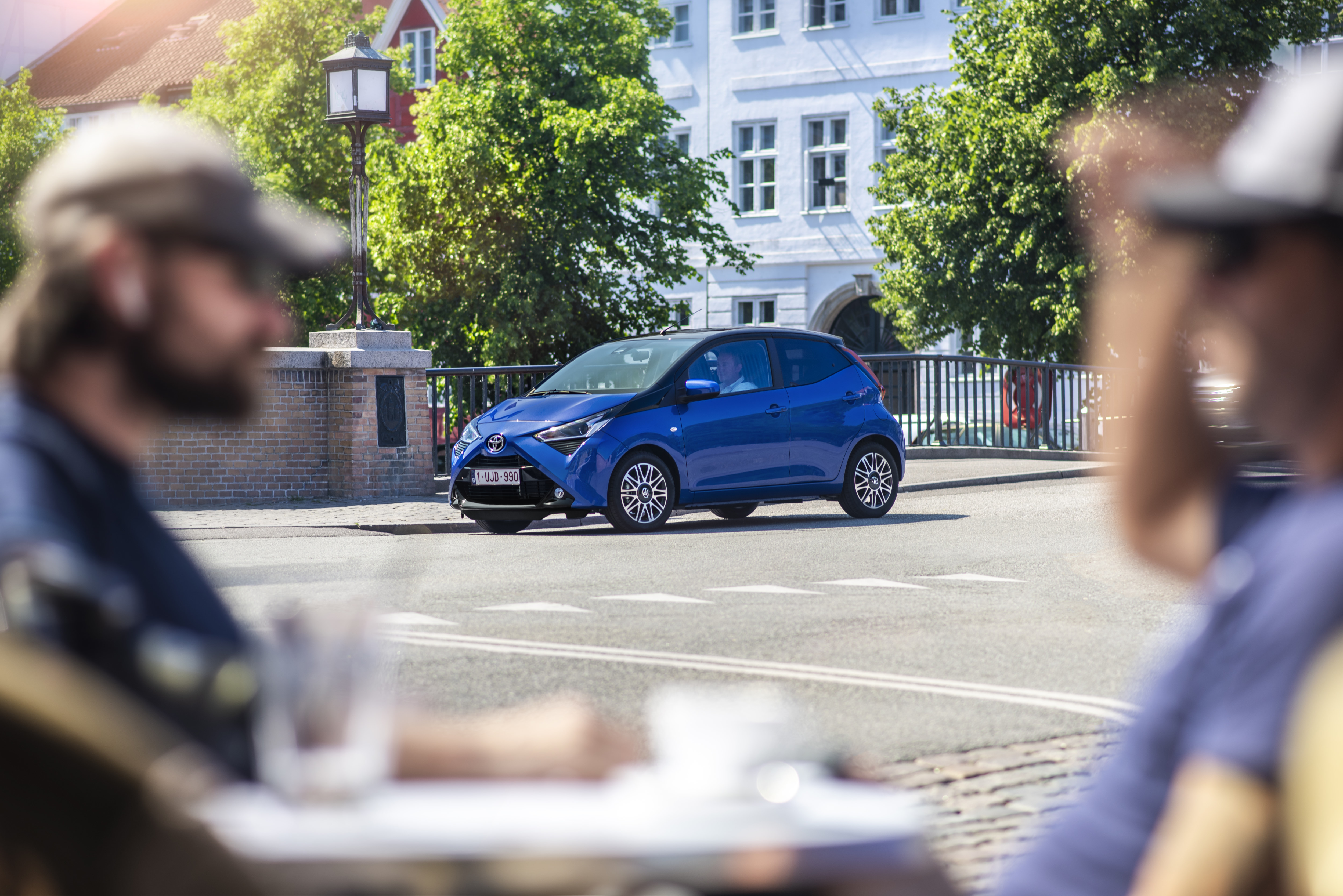
As with most cars in this class, the key feature of the Aygo’s driving experience is lightness – all the controls are free and easy, and the short-travel clutch is a nice bonus, allowing for quick gearshifts.
As with most city cars, the Aygo is pretty chuckable, with the narrow tyres clinging on without too much momentum to challenge them. It’s rather remote, though, with the chassis and steering not as communicative as they could be.
It rolls heavily in the corners but the payoff is a comfortable ride – the Aygo deals effectively with city potholes and speed bumps. Toyota’s worked hard on improving refinement, and while the result is a slight improvement over the old car, it’s still not as hushed as rivals. The engine gets very vocal when it’s worked hard – and you will need to work it hard – and wind noise is noticeable at higher speeds.
How does it look?
Driving the new Aygo today. Prefer the new look to the old – still not a fan of the angry robot face inside though pic.twitter.com/hqYEcZvxkz
— Tom Wiltshire (@mctreckmeister) June 7, 2018
Before this facelift, the Aygo took the inspiration for its bold design from Japanese manga comics. The revisions tone things down rather, making for a car that’s less divisive but also more anonymous.
Overall, it’s a smart-looking little thing though, with eye-catching LED daytime running lights and a subtler ‘X’ design for the grille. The rear styling has remained the same, but we like the all-glass hatch and continuation of the ‘X’ theme.
Though basic models do look rather, well, basic, step up the range to mid-spec x-play or above and you get bolder alloy wheels plus personalisation options for the front spoiler lip and the panels below the headlights.
What’s it like inside?

After the bold exterior, the interior is a little disappointing. Some colour – as you’d find on the VW Up! or Renault Twingo – would lift things, but the Aygo is mostly a sea of different-coloured grey plastics.
It’s not very spacious either. While rivals can accommodate adults in the rear, albeit for brief journeys, limited legroom and a severe lack of headroom mean you wouldn’t be able to fit four six-footers in this car, no matter how short the trip. The boot is also tiny, with a high loading sill to lug things over.
What’s the spec like?
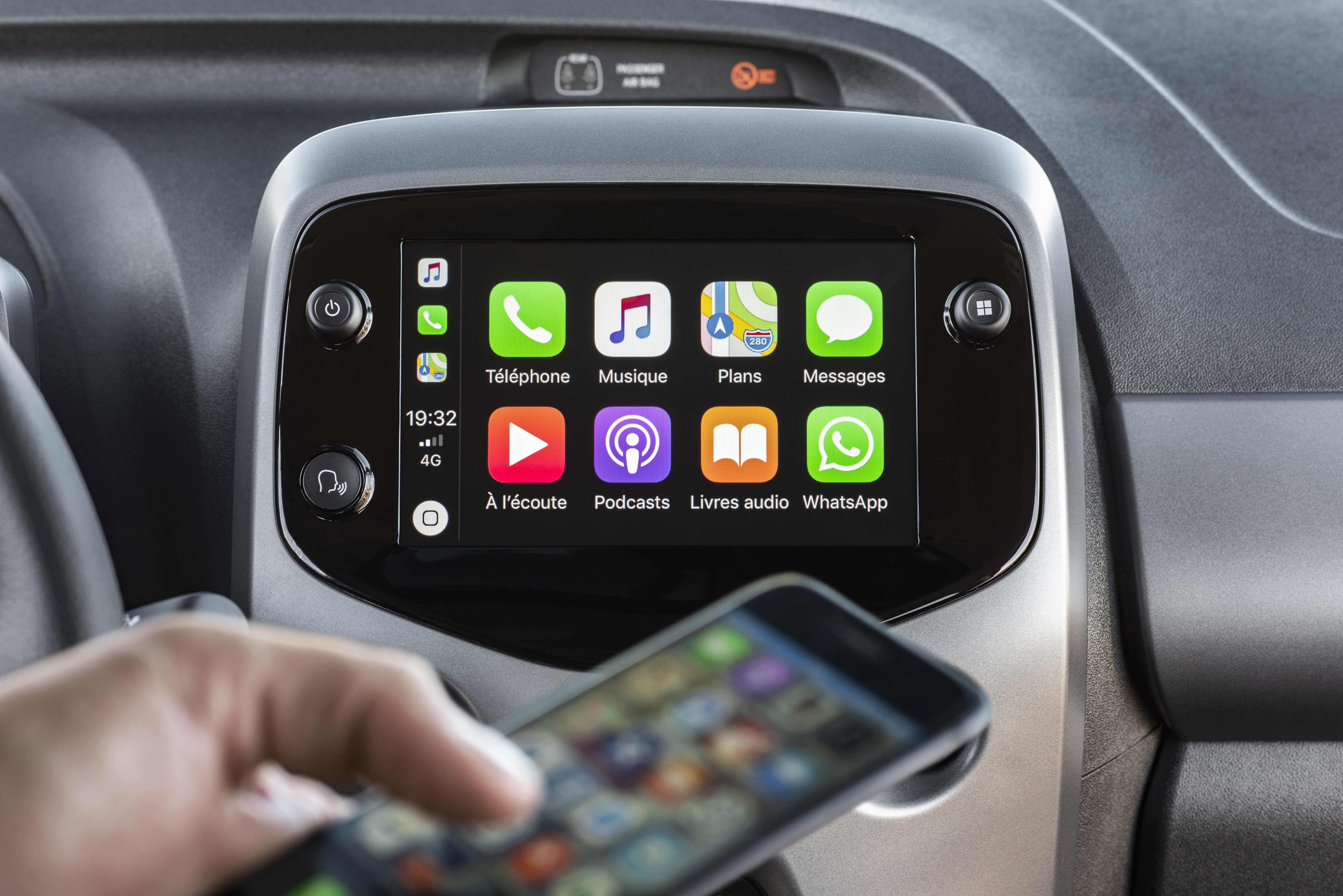
Mid-spec x-play grade gets most essential kit including air conditioning, height adjustment for the driver’s seat, Safety Sense automatic emergency braking and a touchscreen infotainment display. It’s a big upgrade over the screen in the old car and, crucially for younger buyers, supports Apple CarPlay and Android Auto.
Higher trims add exclusive paint finishes and alloy wheels but not much extra equipment. The x-plore grade adds foglights, a reversing camera and built-in sat nav, while high-end x-cite and x-clusiv gain climate control air conditioning, part-leather upholstery and keyless entry.
Step up the grades and things do quickly become expensive, though. A mid-spec x-play starts at £11,375 – more than £1,000 above a mid-spec Skoda Citigo SE, while our top-spec x-clusiv was an eye-watering £13,895.
Verdict
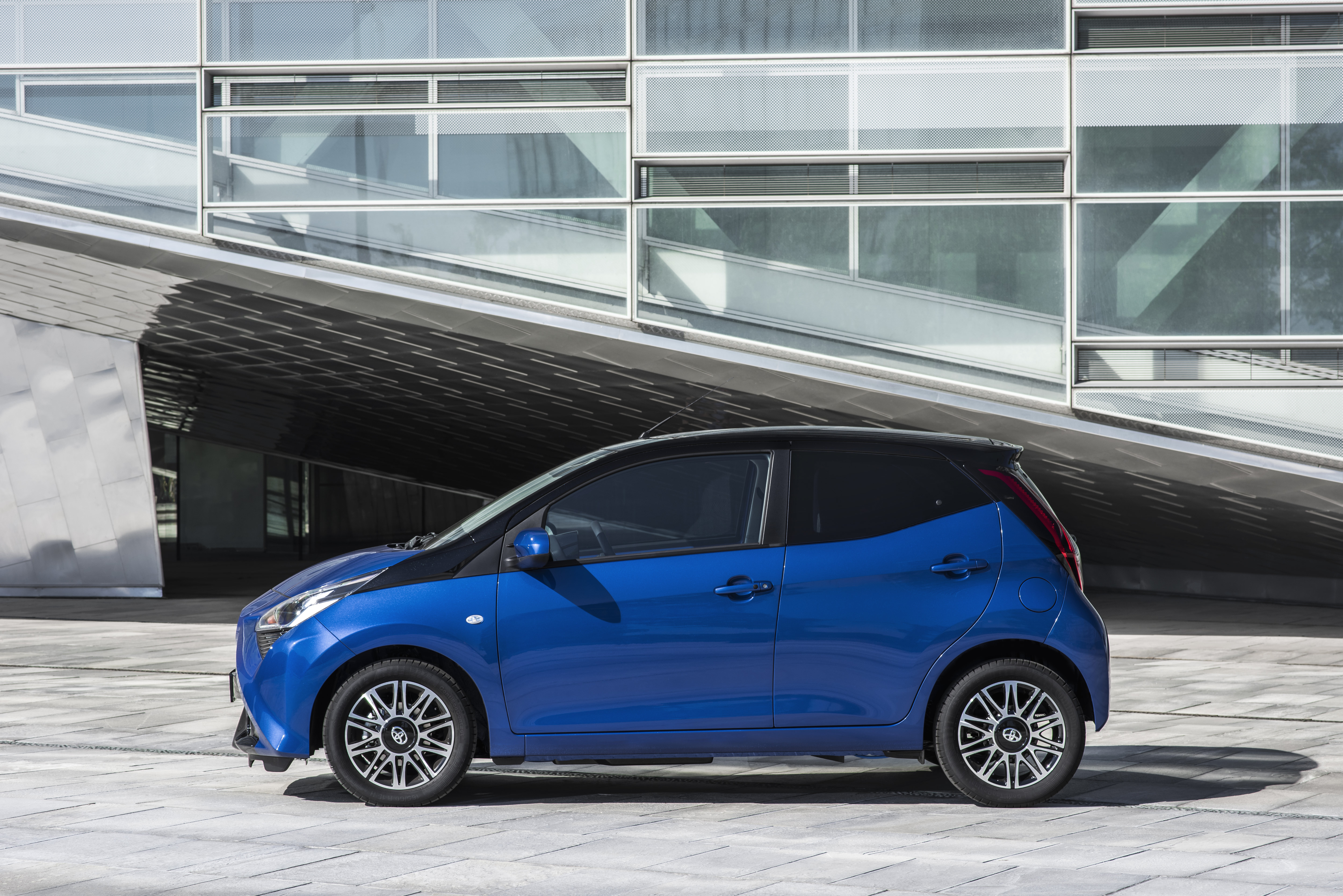
The Toyota Aygo fails to overcome some of the hurdles that other city cars can leap – it’s still very slow, unhappy cruising on the motorway and lacks the space that rivals offer. Remain in town though and it’s a great option – easy to manoeuvre, effortless to park and fun to dart about in. The purchase price is a little high compared with rivals’ but running costs should be very low indeed, and Toyota’s standard five-year warranty is a big plus for private buyers.

